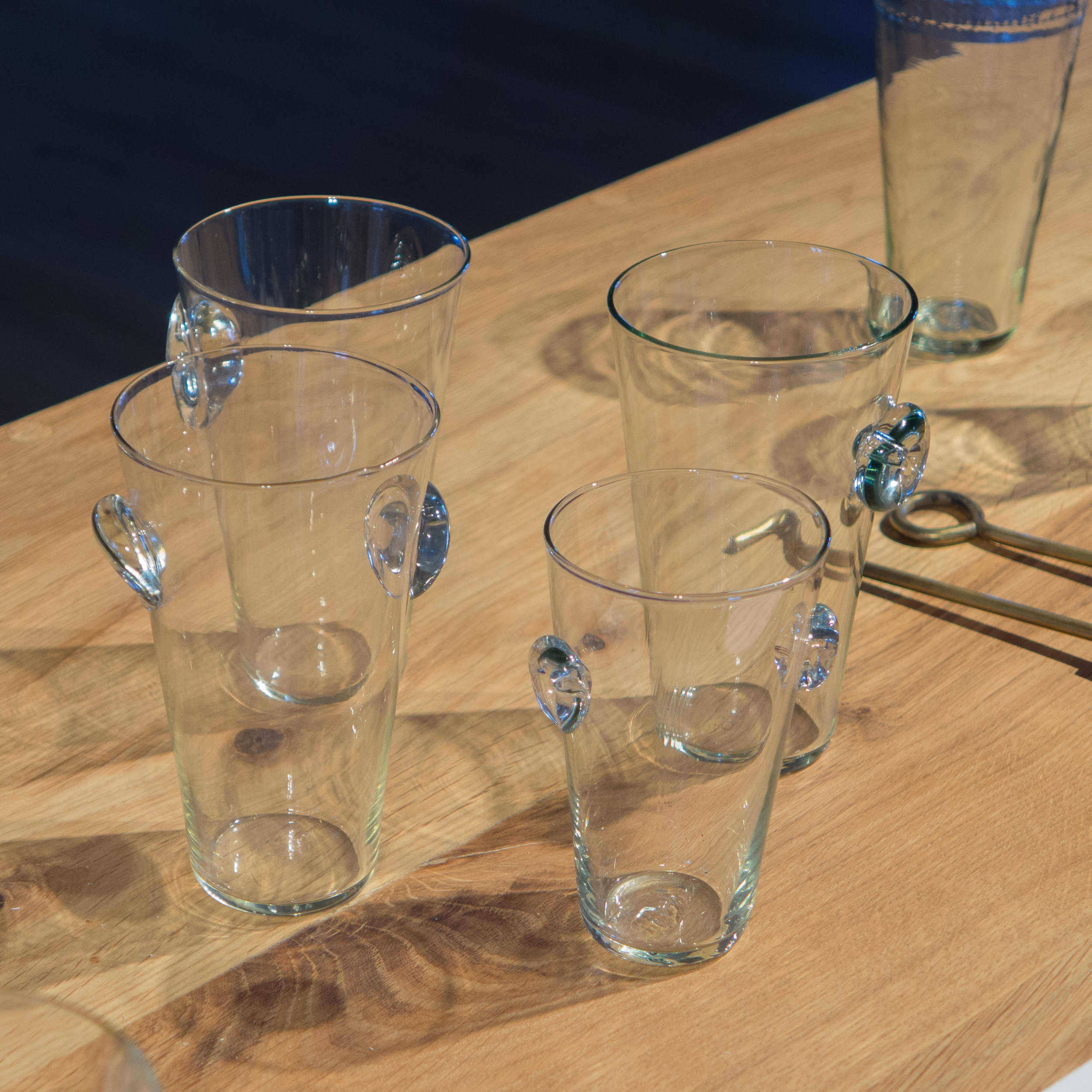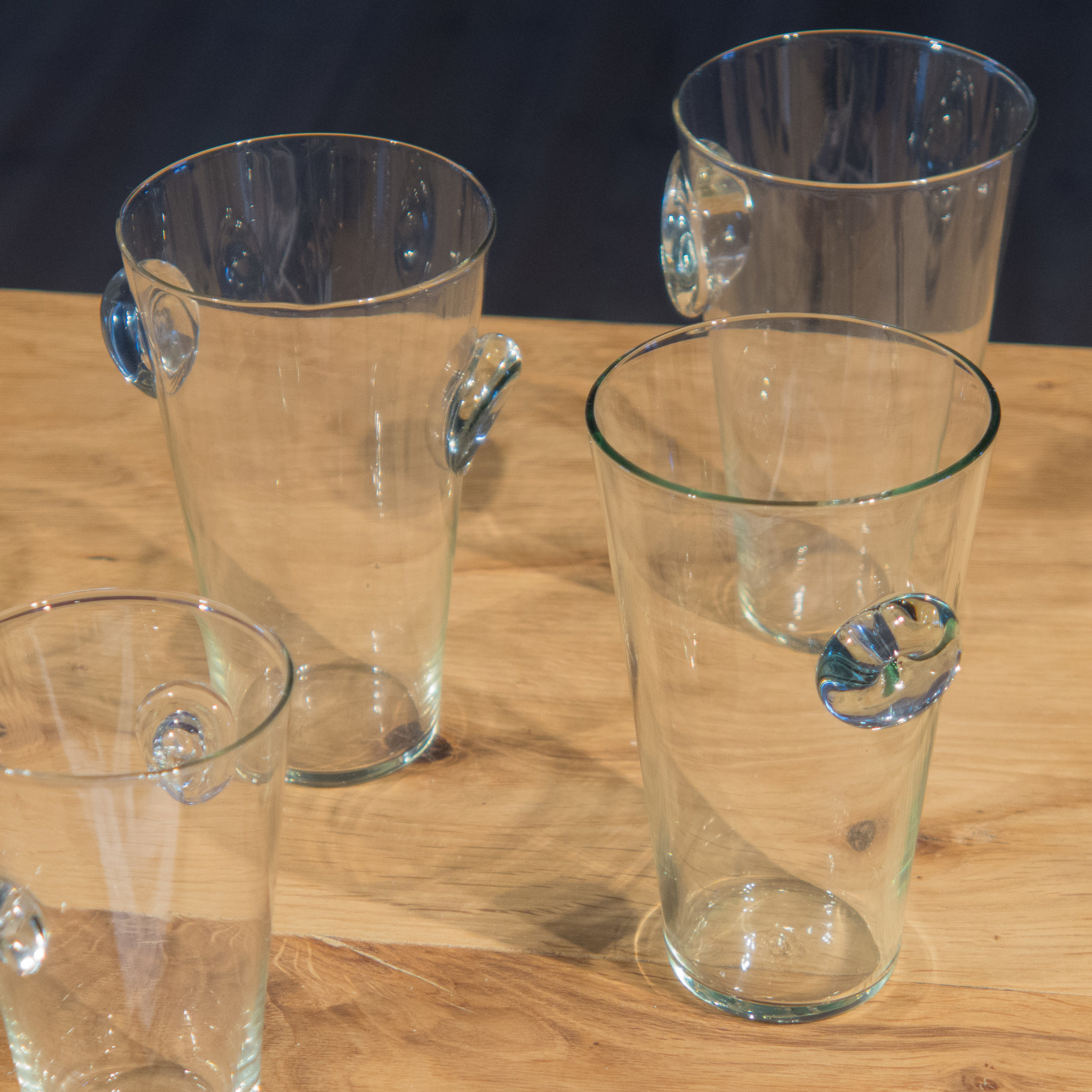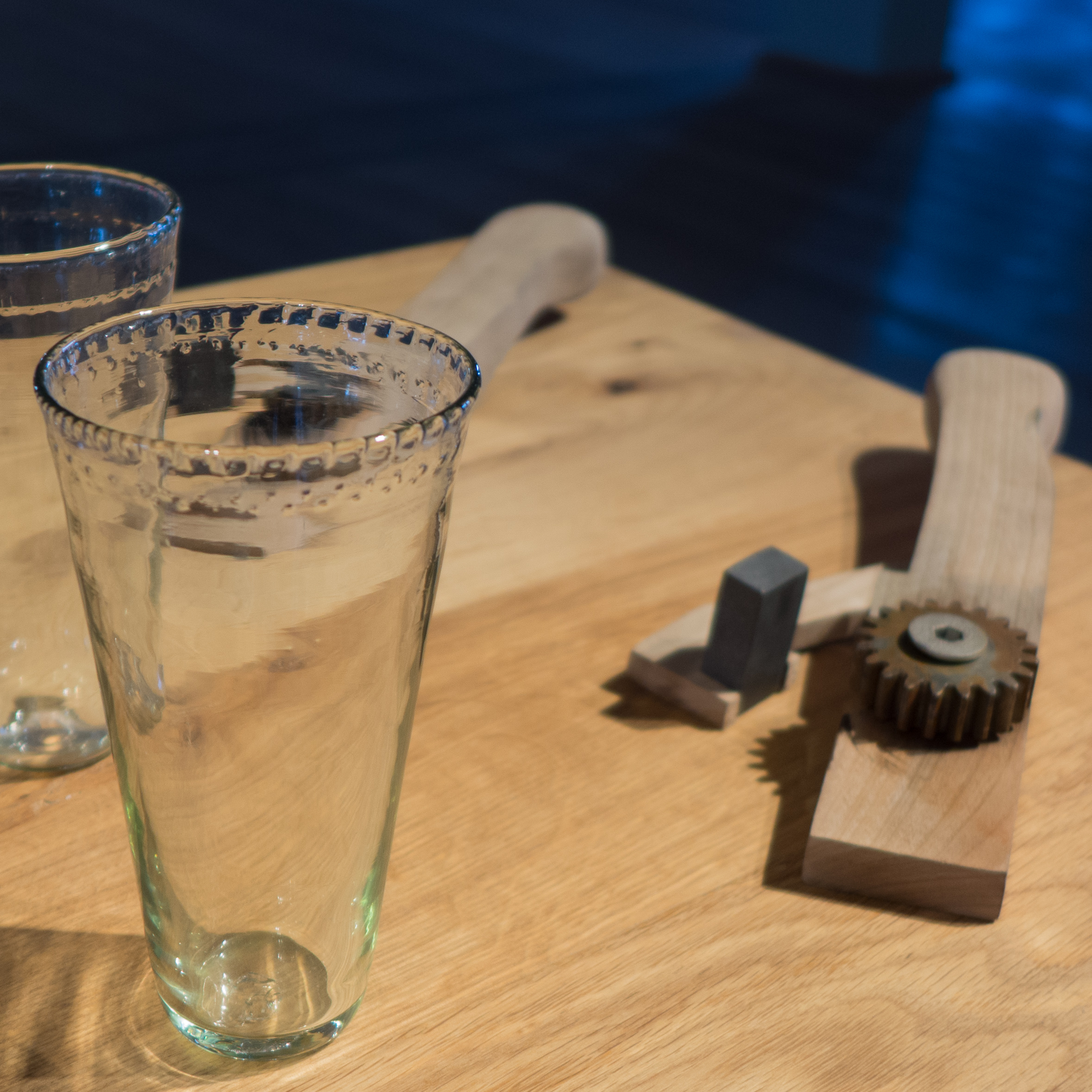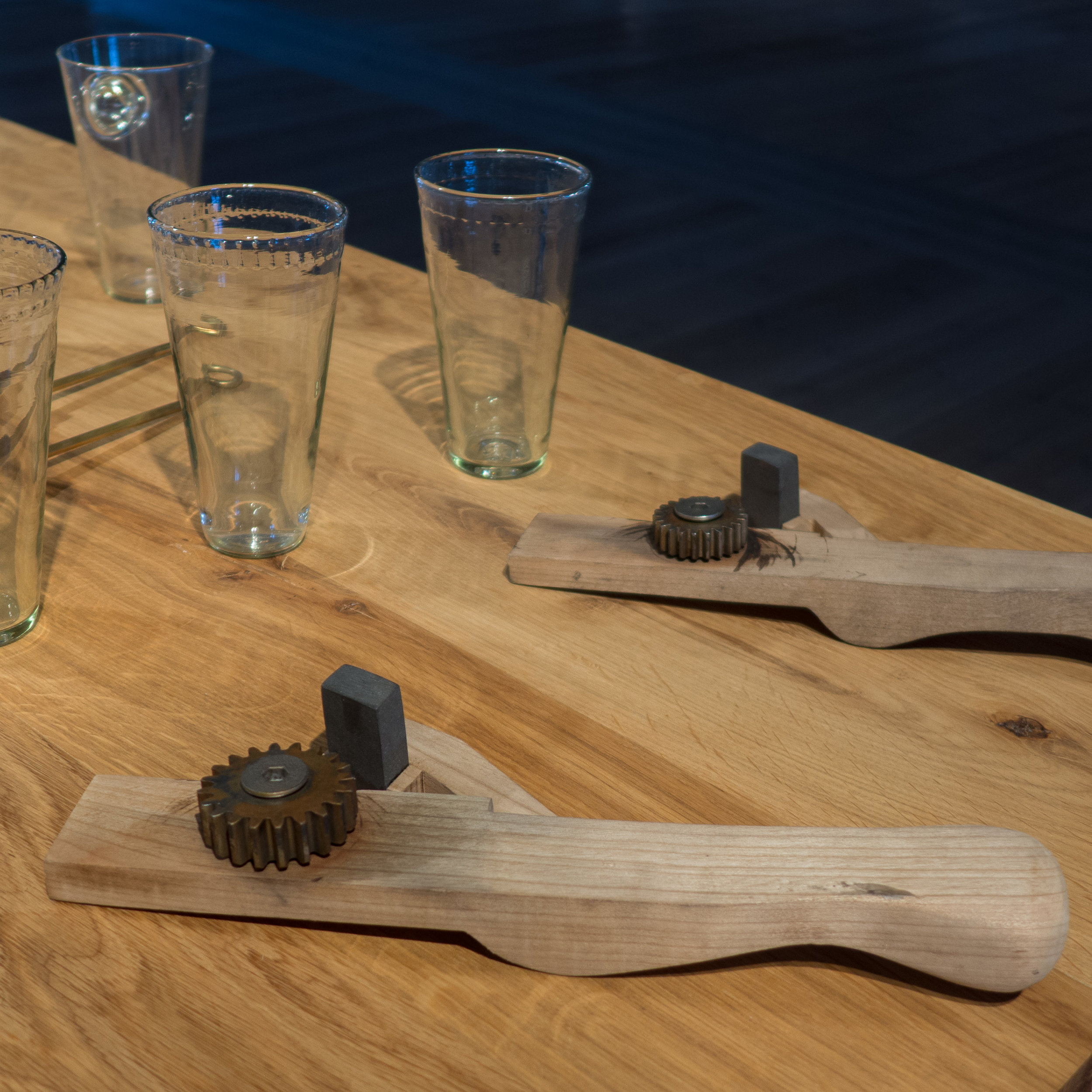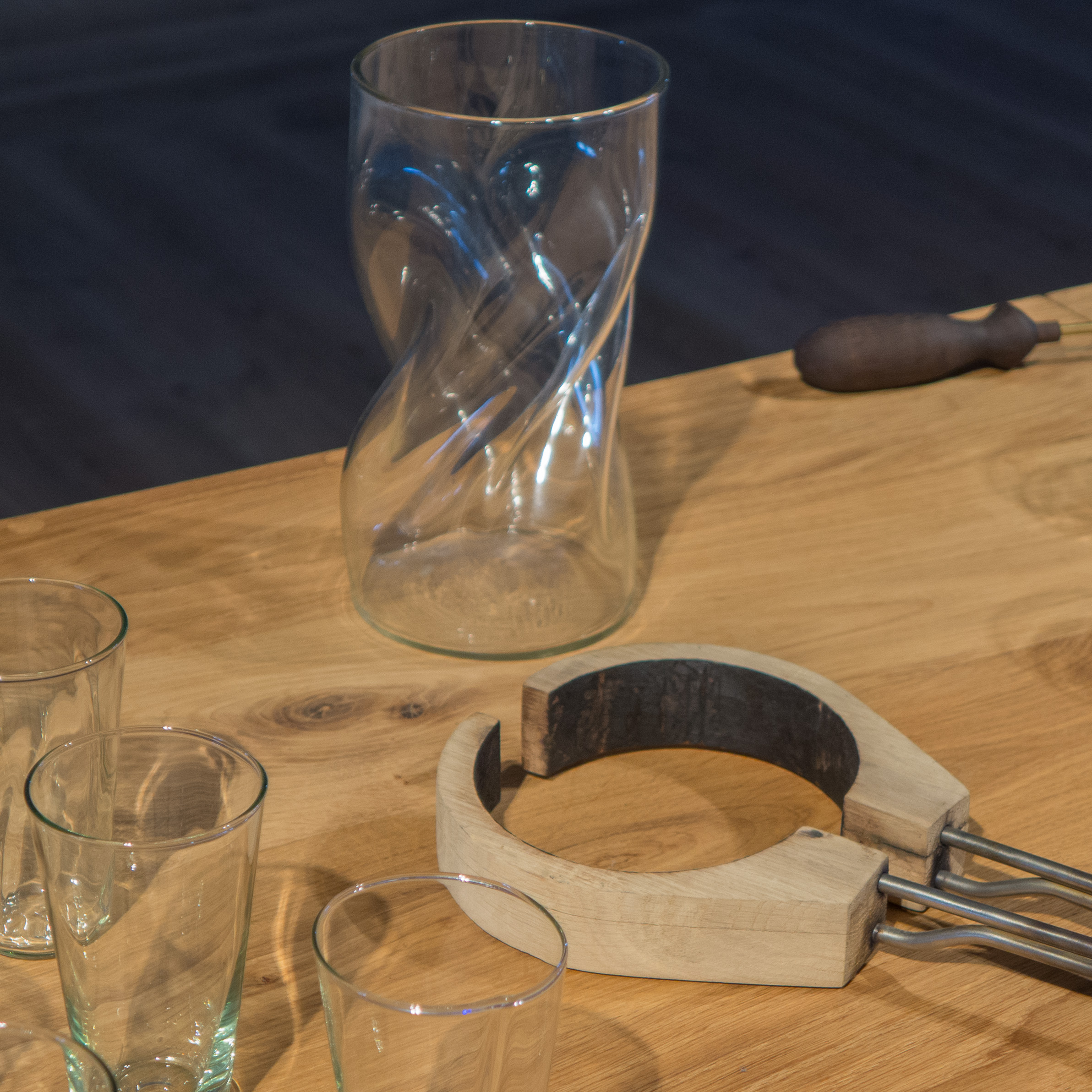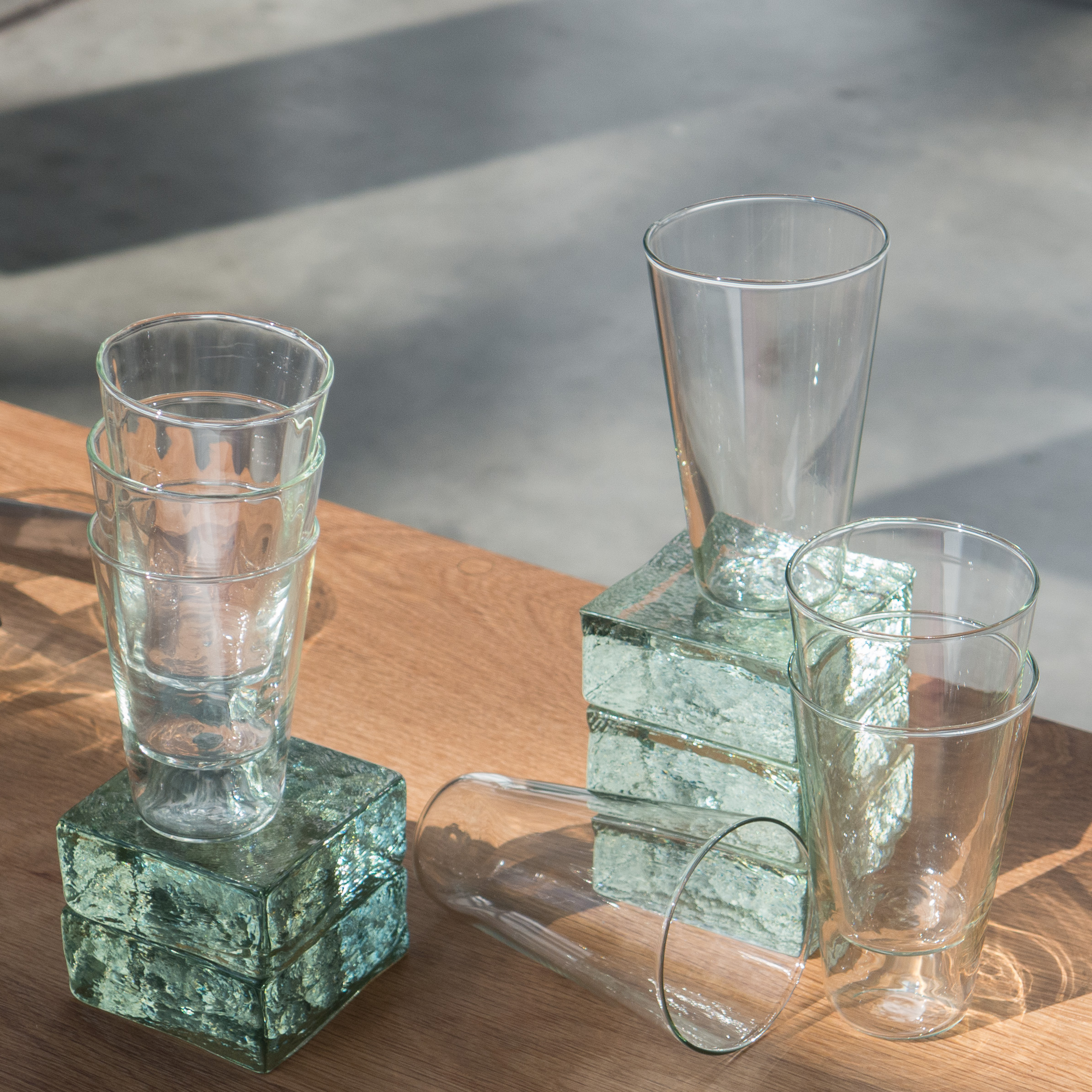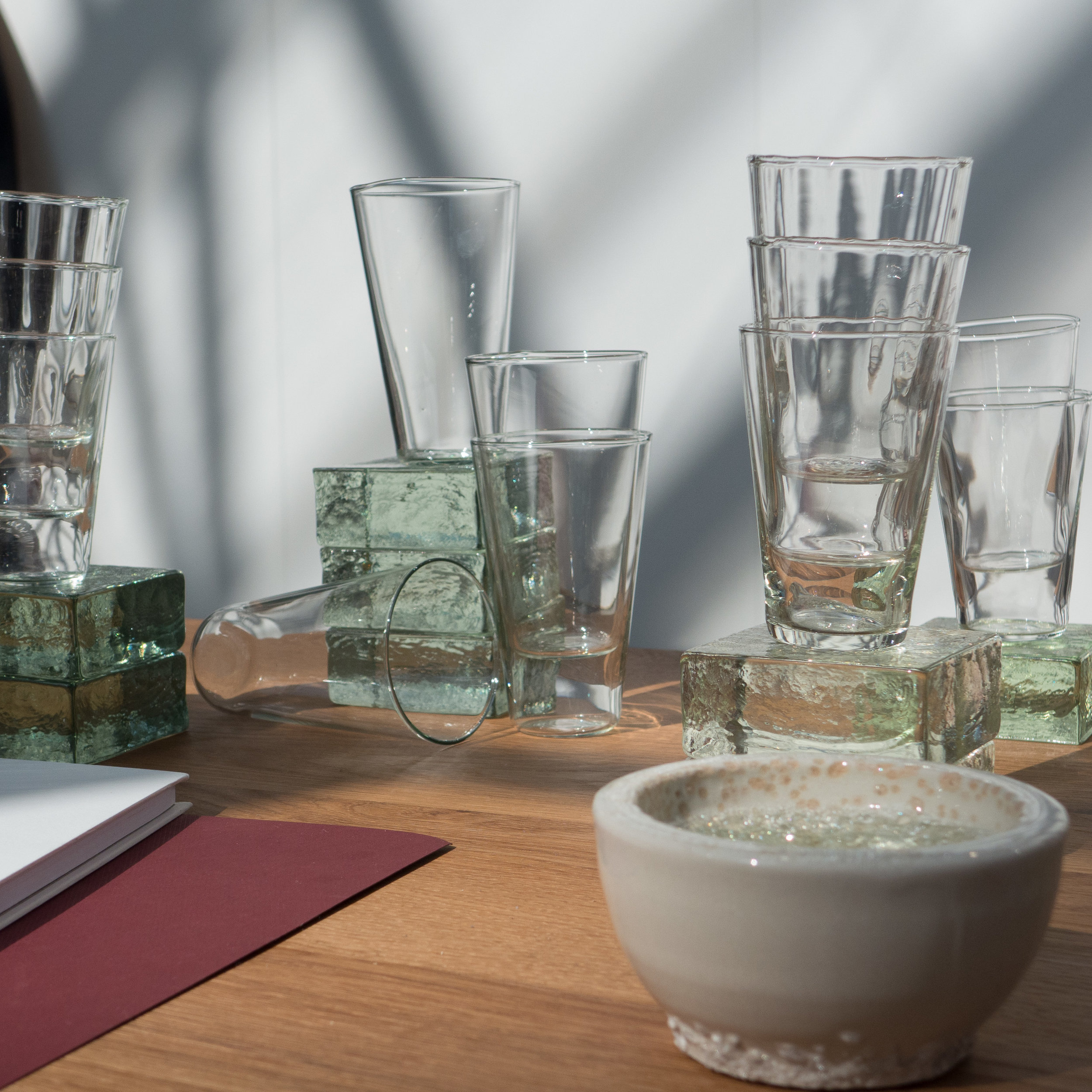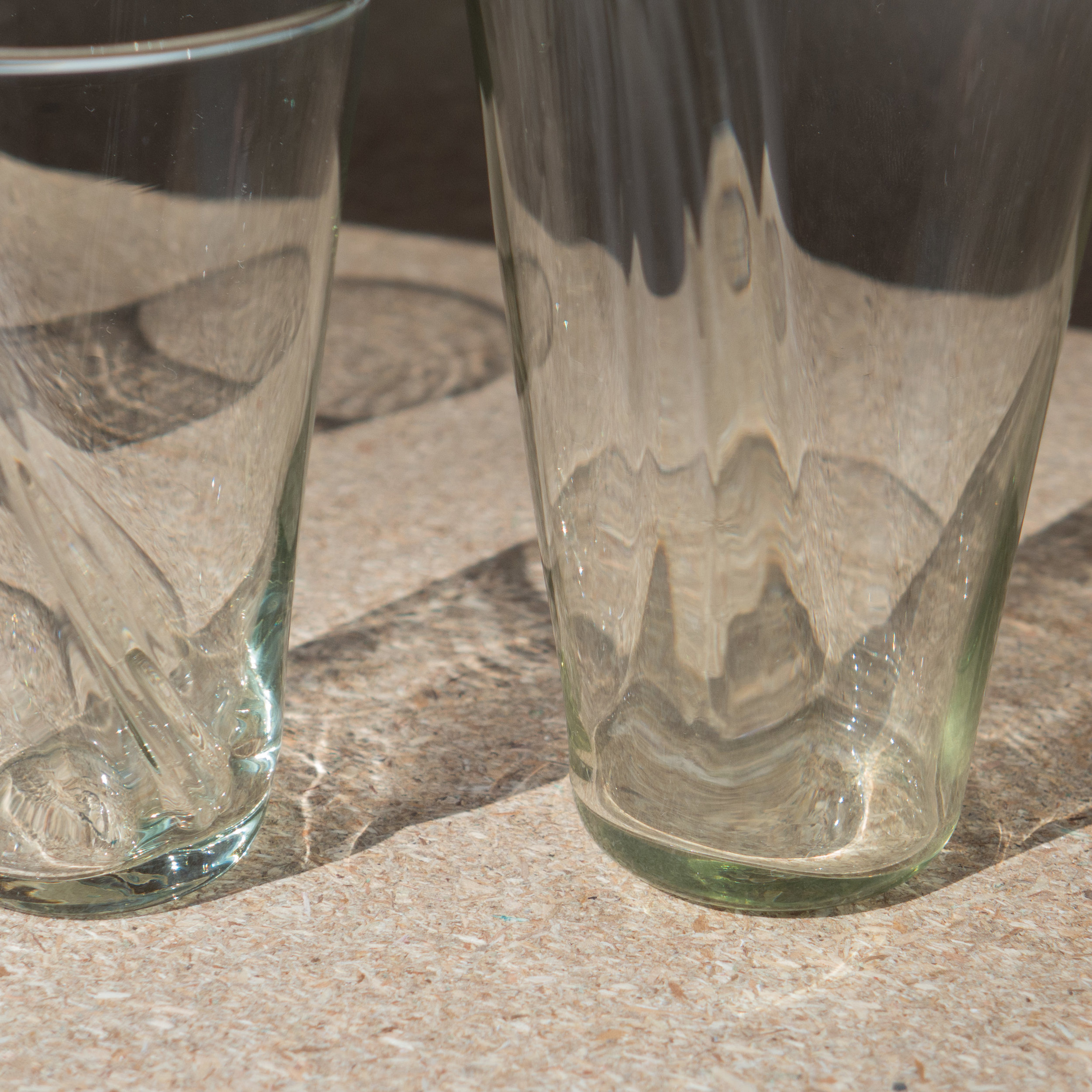the glassmaker Rick Gerner
/
In the Autumn there were two opportunities in Copenhagen to see the work of Rick Gerner: at northmodern he was one of eighteen young designers from Det Kongelige Danske Kunstakademi Designskolen (the Danish Royal Academy schools of design) who showed their work in an area called Talents and Schools and then, in September, graduate students from the Kongelige Danske Kunstakademi School of Ceramics and Glass on Bornholm showed their work in an exhibition, Silica Visions, at the Round Tower in Copenhagen.
Rick Gerner is from the Netherlands and started his design training there but began to question if his studies, and the approach to what he was doing, was right for him and right for what he wanted to achieve. He discovered glass making; realised that the very direct, hands-on approach of training within a craft discipline, rather than dealing with design as simply a stage in the production process, was what he really wanted to do and he transferred to Bornholm.
Understanding that, you can see in his work the enthusiasm and the determination of the convert … there is a focus and an intensity in his work but also the sense that he is testing and pushing the boundaries as he tries to understand the material he has chosen to work with.
He has gone back to basics; not just looking at glass itself as the raw material - looking at what can and cannot be done with molten glass in the process of making a glass vessel - but he has also analysed how he uses the tools needed to gather the glass; form it into shapes and crimp or cut or finish the vessels he has formed. He has made the tools he needed and for his graduation project he has photographed and analysed how he uses those tools.
This is like a young writer exploring the sounds and rhythms of the words of their language or a professional musician finding what they feel to be exactly the right instrument for them to play and then exploring and experimenting and finding the limits of what they can do with the sound and with the strengths and the limits of that instrument. And, of course, all young craftsmen, learning their trade, test the boundaries and develop an understanding of what they can and cannot do with the materials they are working with - Rick Gerner is only unusual in that he has analysed and photographed and written about that process.
He works with a straightforward glass that has tones of green with slight variations in that colour - minerals and chemicals have to be added to make glass that is sharply clear or deeply coloured or to make it perform in different ways in its molten or finished state - and this basic quality gives his finished work a warmth with slight irregularities and slight inconsistencies that bring the pieces to life. It is the impurities that gives the glass the qualities that show it was made by hand and not formed and moulded in perfect regularity by a machine but it is also the irregularities in glass that give it its reflective qualities.
Of course, perfectly consistent glass - with each piece produced being exactly the same as the first and the last - has distinct qualities and distinct benefits for certain work but the character and the qualities of the glass are different to the glass made by Rick Gerner. Surely, this is comparable to the differences between stoneware and porcelain in ceramics; between copper and steel in metalwork or between raw linen and fine cotton in textiles. That is not to make a judgement based on quality or intrinsic value but simply a distinction between different types of material that vary between a softer irregularity or a sharper and more consistent regularity. And it’s not to say that one is better and the other worse … just different. The individual materials have inherent qualities that the designer has to understand and exploit.
The shapes and forms in the glassware produced by Rick come directly from the methods and techniques of the production itself and so there are links back to the shapes and forms of decoration in ‘honest’ and straightforward glassware from the late medieval and the early modern period of the 16th and 17th century. Back to that period when the glassmakers of the Netherlands and the north German states and, further afield, in Bohemia, began to develop successful glass industries that produced everyday glassware for the table. But the forms and decoration developed by Rick Gerner are only similar because the material and the techniques he uses are much the same now as then but he is bringing to his craft his own tastes and his own distinctly contemporary eye. As said so often now on this web site, this is not about reproducing historic designs but about starting with well-established craft skills and taking them in a new direction that has to be appropriate and relevant to modern life and modern needs.
